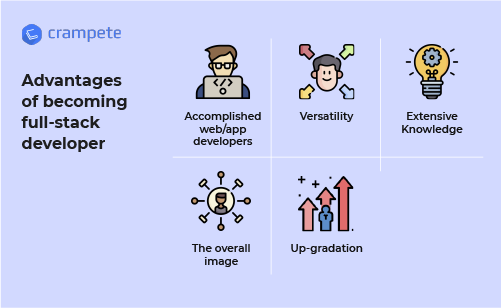Bragging Rights
Explore the latest trends, tips, and stories that make you stand out.
Full-Stack Wizardry: Crafting Digital Dreams
Unleash your creativity with Full-Stack Wizardry! Master the art of crafting digital dreams and transforming ideas into stunning websites.
The Journey Through Full-Stack Development: Essential Skills and Tools
The journey through full-stack development is an exciting and challenging experience that demands a diverse set of skills and tools. To become a proficient full-stack developer, one must gain a solid understanding of both front-end and back-end technologies. Essential front-end skills include HTML, CSS, and JavaScript, which serve as the building blocks for creating user interfaces. Familiarity with frameworks such as React or Vue.js can also significantly enhance your ability to create dynamic web applications. On the back-end, knowledge of languages like Node.js or Python, alongside experience with databases such as MongoDB or MySQL, is crucial for managing data and ensuring seamless application performance.
In addition to technical skills, aspiring full-stack developers should familiarize themselves with various tools that streamline the development process. Version control systems like Git are vital for tracking changes and collaborating with others, while Docker offers the capability to create consistent development environments. Understanding how to use development frameworks and package managers such as NPM or Bower is also beneficial. As the landscape of technology continues to evolve, keeping up with the latest trends and continuously improving your skill set will be essential in making your journey through full-stack development both productive and rewarding.

Unlocking the Secrets of Seamless Frontend and Backend Integration
The process of seamless frontend and backend integration is crucial for creating a cohesive user experience in modern web applications. It begins with understanding the key roles that both frontend and backend play in an application. The frontend is responsible for what users see and interact with, while the backend handles data processing and storage. To achieve seamless integration, developers should focus on effective communication between these two layers, utilizing APIs to facilitate data transfer and ensuring that the frontend remains responsive and dynamic. This harmonious relationship not only enhances performance but also ensures that users can navigate the application effortlessly.
Furthermore, key practices such as utilizing frameworks and libraries can significantly simplify the integration process. For instance, technologies like React, Angular, or Vue.js on the frontend paired with Node.js, Django, or Ruby on Rails on the backend can create a robust architecture for an application. When these technologies are employed effectively, developers can implement features such as real-time updates and asynchronous data fetching with ease. By prioritizing clear data structures and maintaining a well-defined API, teams can unlock the potential for truly seamless frontend and backend synchronization, ultimately leading to improved user satisfaction and engagement.
Common Challenges in Full-Stack Development and How to Overcome Them
Full-stack development presents a range of challenges, from managing a complex codebase to ensuring seamless communication between the front-end and back-end. One common issue is the steep learning curve associated with mastering both client-side and server-side technologies. Developers often struggle to keep up with the rapidly evolving landscape of frameworks and libraries, leading to potential skills gaps. To overcome this, it's essential for developers to focus on continuous learning through courses, webinars, and community engagement, allowing them to stay updated with the latest advancements in full-stack development.
Another challenge in full-stack development is the difficulty in achieving optimal performance for applications. As applications grow in complexity, ensuring scalability and speed becomes increasingly vital. Developers may find it hard to optimize both the front-end user experience and back-end performance without compromising functionality. To address this, implementing best practices such as code splitting, lazy loading, and using efficient database queries can enhance application performance. Additionally, utilizing performance monitoring tools can help identify bottlenecks and areas for improvement, ultimately leading to a smoother user experience.